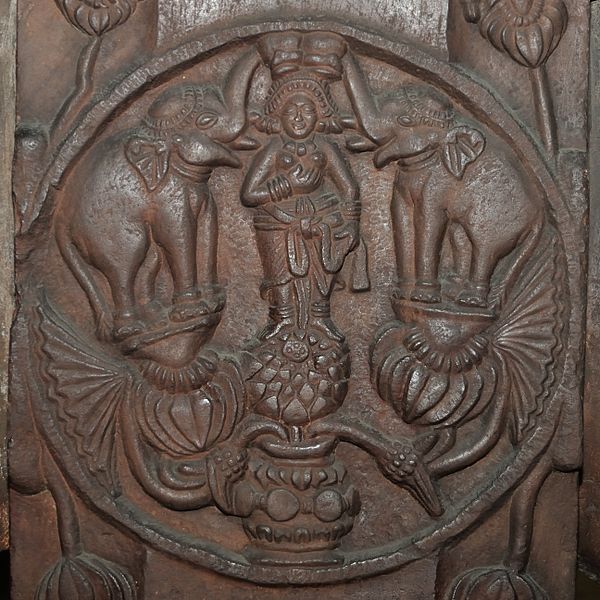The Pompeii Lakshmi is an ivory statuette that was discovered in the ruins of Pompeii, a Roman city destroyed in the eruption of Mount Vesuvius 79 CE. It was found by Amedeo Maiuri, an Italian scholar, in 1938. The statuette has been dated to the first-century CE. The statuette is thought of as representing an Indian goddess of feminine beauty and fertility. It is possible that the sculpture originally formed the handle of a mirror. The yakshi is evidence of commercial trade between India and Rome in the first century CE.
An ivory statuette of Lakshmi (1st century CE), found in the ruins of Pompeii
The statuette upon discovery in Pompeii, before reconstitution.
The Pompeii Lakshmi, front and back.
Sides of the statuette.
Lakshmi also known as Shri, is one of the principal goddesses in Hinduism. She is the goddess of wealth, fortune, power, beauty, fertility and prosperity, and associated with Maya ("Illusion"). Along with Parvati and Saraswati, she forms the Tridevi of Hindu goddesses.
Sri Gaja Lakshmi by Raja Ravi Varma (1896)
Image: Gajalaxmi Medallion 2nd Century BCE Red Sand Stone Bharhut Stupa Railing Pillar Madhya Pradesh Indian Museum Kolkata 2012 11 16 1837 Cropped
Image: Coin of Azilises showing Gaja Lakshmi standing on a lotus 1st century BCE
Image: Coin of Vikramaditya Chandragupta II with the name of the king in Brahmi script 380 415 CE








